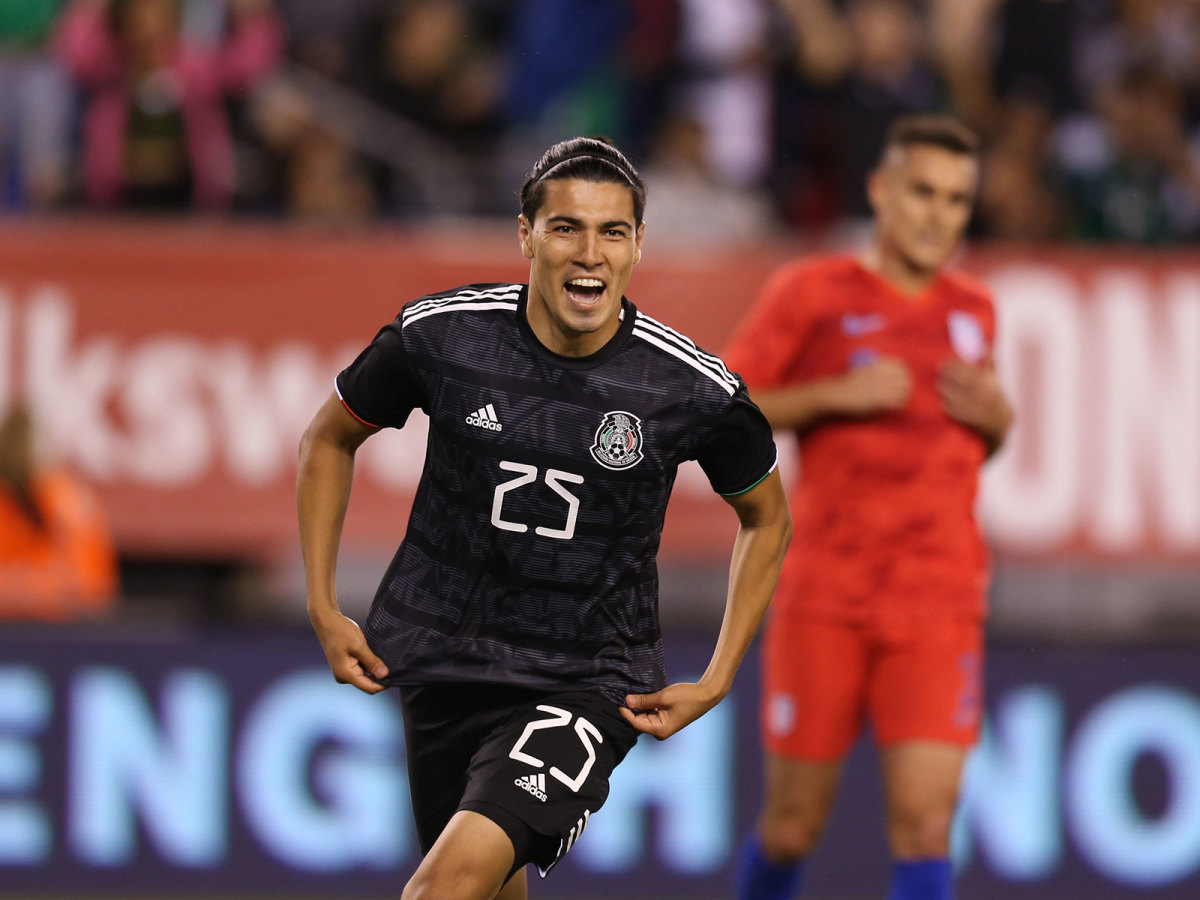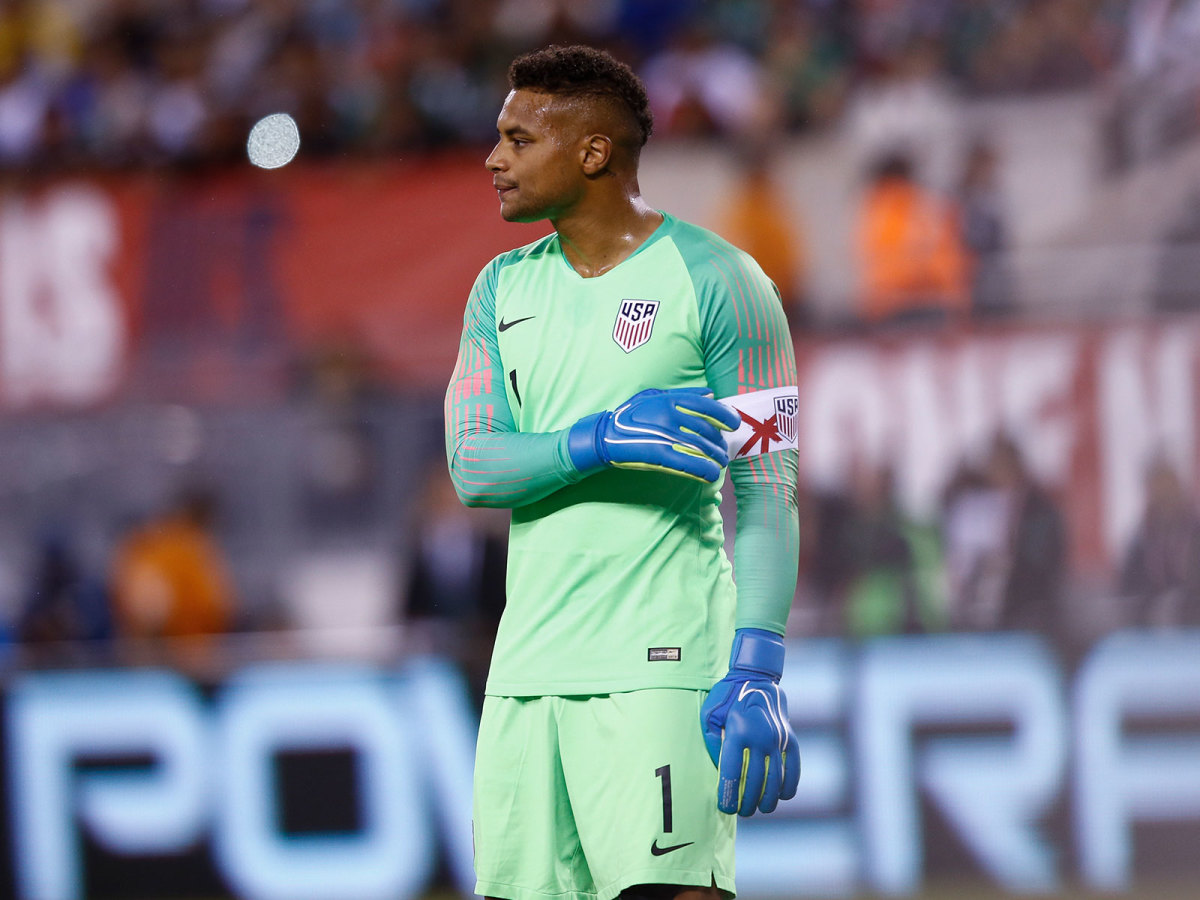Despite Struggles vs. Mexico, USMNT Insists on Sticking to Its Style, Approach

EAST RUTHERFORD, N.J. — Gregg Berhalter and the U.S. men's national team are going to try the same thing, over and over again. And eventually, they do expect different results.
Some may think that’s insane, especially after Friday’s 3-0 beating by Mexico in a friendly here at MetLife Stadium. But Berhalter said he’s committed—committed to a way of playing and to developing men who are comfortable in possession and creative on the ball. That takes patience and resolve, especially on a night like Friday, when everything’s unraveling, and when a relentless Mexican press is forcing turnover after turnover and making that blind, hopeful long ball seem like the most sensible option.
Berhalter said the USA played that way in July’s Gold Cup final, which it lost, 1-0, to Mexico. Defeat at the Meadowlands was heavier, but somehow more satisfying. That’s because the Americans didn’t waver from their philosophy, Berhalter said.
“Our focus was to keep trying to focus on making progress as a group, being brave with the ball, looking for those openings,” he said. “I think there were times when it was good and there times when it wasn’t so good. But that’s going to be the case.”
Right back Reggie Cannon had more room on the flank at the Gold Cup final then he did at MetLife Stadium, but he agreed that paying the price now would lead to dividends later.
“That’s actually the big point that I think people are failing to grasp,” the FC Dallas defender said. “We can’t abandon the concepts when things get hard, because that way, we won’t improve. In two years from now, we’ll be in the same spot. When things get tough like that, when you come in against a Mexico team that's pressing the heck out of you, you have to learn to play out. And unfortunately that’s going to come with mistakes and learning processes and moments to grow. The fact that the team stayed with it and stuck with the concepts is a big positive from tonight.”
Statistically, the USA wasn’t awful. Berhalter made sure to point that out during his postgame press conference. The hosts had more of the ball than Mexico, although the vast majority of that possession was in the middle and defensive thirds of the field. Their passing accuracy wasn’t much worse than Mexico’s (and it was better in the attacking half), and they created a penalty kick late in the game on a pass from Sebastian Lletget to Jordan Morris (which Josh Sargent subsequently missed).
But the eye test said something else—that Mexico was almost never troubled, that the USA had difficulty simply getting the ball from the backs to its midfielders, and that the odd, isolated scoring chance here or there will always be overshadowed by the devastating turnover in the defensive third. Multiple El Tri chances came courtesy of U.S. giveaways.

Midfielder Wil Trapp said the Americans struggled to read the Mexican press quick enough to exploit the space those players left behind them. The idea, he said, was to find the feet of Christian Pulisic and Tyler Boyd in those pockets of space—not play longer passes down the flanks or toward striker Gyasi Zardes.
“I think they did a good job of bringing pressure time and time again to close angles that make it hard,” Trapp said.
Added Berhalter: “Specifically what we wanted to do was use our three midfielders lower … connecting to the back line when they had the ball, and then we felt like we could open spaces in the pocket for Christian and Tyler. And I think in the beginning of the game it worked well. As they got more aggressive, as they started to release their wingers to our center backs and release their fullbacks to our fullbacks, it got harder.
“Then it’s a question of, 'Is there an opportunity play long?'” he continued. “Should we be looking for that, or can we still play? For me, it’s a great example for the guys just to keep working, keep pushing, keep making progress. Today I saw guys that at least continually wanted to try to keep playing.”
Pulisic’s impact was limited, but his commitment wasn’t. He played hard, showing a consistent willingness to cover ground, mix it up a bit and hunt for the ball, often to no avail.

“Of course there’s frustration when you lose 3-0. There’s always frustrations,” said Pulisic, who’s returning to Chelsea and will miss Tuesday’s friendly against Uruguay in St. Louis. “But we have a style of play that we’re setting out and we’re still trying to execute, and obviously today we didn’t pull it off at all times. But there were a few good moments, and that’s all we can take from it and just try to continue to learn.”
Learning is harder on a national team, which gathers for only a few days at a time every couple months and features evolving and rotating lineups. Even the effort to build on Friday’s performance will be compromised by Pulisic’s departure, as well as that of Weston McKennie, who will head back to Schalke 04. Midfielder Alfredo Morales and goalkeeper Zack Steffen (Fortuna Düsseldorf), defender John Brooks (Wolfsburg) and goalie Sean Johnson (New York City FC) also are leaving camp.
“It’s the hardest thing in the world,” Pulisic said of building a complex tactical foundation on the national team level. “But all the national teams are the same. So we have no disadvantage there. … It’s hard to teach a real system and be very specific with it. It’s not easy.”
Trapp spent five years working with Berhalter at the Columbus Crew. He said mastering Berhalter’s possession soccer took time there as well, and they worked together every day for months on end.
“It’s a way of playing in which the learning curve is sharp, and you get punished at times,” Trapp said. “It’s one of those where you could abandon ship for sure. But as I saw when we were in Columbus, we had mistakes early on where eventually guys got more confident, and they were able to see the pass and be more comfortable on the ball and find the solutions better.”

Berhalter will have the group for a couple more days of training before meeting Uruguay at Busch Stadium, then the team will disperse again before reconvening for Concacaf Nations League play in a month. The opponents then, Canada and Cuba, won’t be nearly as fearsome as the loaded Mexico team that took the field Friday. The gap in talent and experience between the USA and El Tri is as large as it has been in recent memory. Often in those situations, the inferior team retreats, packs it in, and tries to counter via long passes from the back. Berhalter’s squad tried to play a different sort of soccer, and it got burned. But the point, the manager said, isn’t that the Americans got burned. It’s that they tried.
“I see where the narrative is going now,” after a handful of press conference questions. “It’s 'why are we playing the way we’re playing?' That’s the first question. The second thing is, 'we don’t have the players to do it.' That’s what all you guys are thinking. And to me it's about developing players.”
He continued, “I can’t be more proud of a guy who goes out and tries, and tries to do things. We’re making progress. That’s not going to be your narrative right now, and I understand that. But internally, we believe we’re making progress.”
